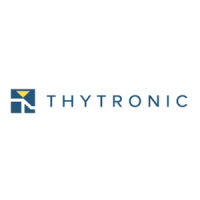
Do you have a question about the Thytronic SIF5600 and is the answer not in the manual?
Emphasizes compliance with instructions and attention to symbols for safe operation.
Classifies anomalies into Minor, Major, Fatal, and lists detectable anomalies.
Explains programming matrix, modes of operation (energized/de-energized, latch/no-latch).
Details RS485 and RS232 interfaces, Modbus RTU protocol, and communication parameters.
Explains block input/output circuits for pilot wire accelerated logic and their assignment.
Details the operation and assignment of four output relays (K1-K4) to protective functions.
Enables intentional opening and closing of the breaker via front panel or serial command.
Describes electrical connections, including diagrams and precautions.
Warns about not exceeding CT performance and avoiding disconnection of secondary circuits.
Explains how to set the nominal current using jumpers on the circuit board.
Explains how to set the nominal current using jumpers on the circuit board.
Checks auxiliary voltage, CT rated current setting, and all connections before powering up.
Checks auxiliary voltage, CT rated current setting, and all connections before powering up.
Details active buttons (CB Open, CB Closed, Reset) and display behavior in CB MODE.
Explains how to read measurements and parameters using the Read menu.
Allows display and modification of setting data within the Set sub-menu.
Details relay submenu example for self-test diagnostics on auxiliary contacts.
Covers overload (51) and short circuit (50) protective functions and their parameters.
Includes calibration parameters tB and tF for block circuits and pilot wire continuity checking.
Explains how to reset warning lights, counters, events, and diagnostic records.
Allows reading/modifying serial communication parameters like baud rate, parity, address.
Explains activating operational tests with or without output relay command.
Describes ThySetter software operations for configuration, firmware upgrade, and testing.
Details ground fault (50N-51N) functions and their calibration parameters.
Explains how to record modified settings permanently in the relay's EEPROM memory.
Allows commanding breaker opening and closing via the Command menu.
Provides commands to reset configuration parameters to factory defaults.
Explains operation of front panel buttons for menu navigation, reading, and setting.
Explains parameter modification using buttons, status indication with 'E' symbol.
Allows enabling/disabling breaker commands and diagnostic monitoring.
Describes activating test sequences, dummy signal input, and output relay switching.
Explains the block function for accelerated logic systems and coordination criteria.
Describes the tF backup timer for resolving breaker failure in accelerated logic systems.
Details SIF5600 compliance with ENEL DK5600 for MV applications and setting adjustment criteria.
Explains the tB timer for blocking reception of impulses from pilot wire short circuits.
Explains defining trip/adjustment characteristics based on selectivity study for system protection.
Details the Modbus RTU protocol implementation, functions, and data structures.
Defines parameters for phase overcurrent (50/51) and residual overcurrent (50N-51N) functions.
Details the software architecture: Kernel, Drivers, Application, Base Protocol, and Calibration.
Implements MODBUS RTU protocol for RS232 (ThySetter) and RS485 (field bus).
Cyclically monitors hardware and software functions without process interruption.
Explains defining trip/adjustment characteristics based on selectivity study for system protection.
Details contacts, voltage, current, breaking capacity, and switching load for output relays.
Defines parameters for definite and inverse time phase overcurrent functions.
Defines parameters for definite and inverse time residual overcurrent functions.
Specifies parameters for enabling/disabling blocking function and time delays.
Details SIF5600 compliance with ENEL DK5600 for MV applications and setting adjustment criteria.
Illustrates default output relay assignments for ENEL utility applications.
Details IE curve, IE> indep/dep, tE> indep/dep, IE>> indep/dep, Blin IE>>, Blout IE>> settings.
Details K1-K4 modes, tTR1-tTR4 timers, and assignment of functions to relays.
Details IE curve, IE> indep/dep, tE> indep/dep, IE>> indep/dep, Blin IE>>, Blout IE>> settings.
Covers I curve, I> indep/dep, t> indep/dep, I>> indep, t>> indep, Blin I>> settings.
Details tF enable/tF, tB enable/tB, Pulse Blin1, Pulse Blout settings.
Details K1-K4 modes, tTR1-tTR4 timers, and assignment of functions to relays.
Details tF enable/tF, tB enable/tB, Pulse Blin1, Pulse Blout settings.
Covers Modbus parameters: Address, Baud rate, Parity, Stop bit, TX delays.
Covers I curve, I> indep/dep, t> indep/dep, I>> indep, t>> indep, Blin I>> settings.
Details K1 configuration: Self test, PW break, CB fail, Start/Trip functions, and K1 mode.
Covers Modbus parameters: Address, Baud rate, Parity, Stop bit, TX delays.
Details K2 configuration: Self test, PW break, CB fail, Start/Trip functions, and K2 mode.
Details K3 configuration: Self test, PW break, CB fail, Start/Trip functions, and K3 mode.
Details K4 configuration: Self test, PW break, CB fail, Start/Trip functions, and K4 mode.
Describes parameter modification using buttons, status indication with 'E' symbol.